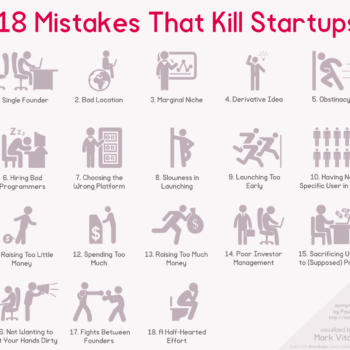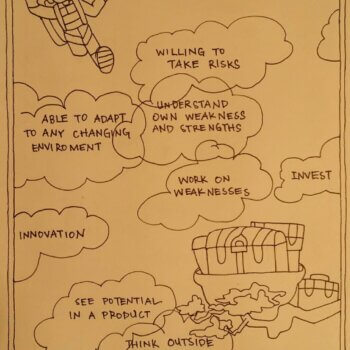I went to TiE Conference 2016 with an agenda. I wanted to know what does it really take to scale a startup. TiE (http://tie.org/) is known for its deep pockets of experience, investments and talent. So if we had all that, what could be needed or lacking in the people and leadership systems?
I spoke to Bob Kruger, seasoned industry executive, advisor and mentor to Alchemist Accelerator and Citrix Startup Accelerator, and current CEO of Apakau (www.apakau.com, a leader in DDoS prevention for dynamic data), and hoped he could shed some light to my questions.
This is Part 1 of a 2-Part discussion with him.
As a first-time CEO, how did you convince the founding team to give up or give you some new controls and why?
First off, the founder [of Apakau] is very technical and really would be entirely happy just living in a room totally enclosed, having a computer and periodically being brought some food. Not a people person. And so he recognizes that deficiency. I happened to have started with the company about two months prior as an advisor. We met over at a community lunch. They told me what they’re working on, which happened to be about the acceleration of APIs and that they can prevent distributed denial of service attacks [DDoS]. I said, “Wow, that’s really good. Everybody wants to have your services, websites performing as fast as possible.” Just that we’re all clear, when a denial of service attack occurs, it doesn’t mean that you’re trying to get on the website, can’t do it but everybody else is fine. It means that everybody stops. It’s a very important area and with over 55% of companies experiencing DDoS attacks and over 30% having those against applications and most cases, 8 out of 10 companies experience them multiple times. This is a very serious problem and existing tools aren’t working.
So we had that conversation and I got very involved in creating the message, the focus, revamping the website and also from a technologies and product standpoint, helping them to focus on DDoS, making it also possible for us to co-exist with other solutions a customer might be using because those may provide a different sort of value. Maybe not even in the DDoS prevention area, it could be like a CDN serving up static data very quickly or images quickly. So, at some point, I had a discussion with a very trusted advisor, also a significant investor, he thought I would be a really good asset to join the company and take responsibility.
You see many companies. What is the crucial thing when the founding team leader, or the founder, refuses to take a new person in? How do you reconcile that?
You know, if somebody doesn’t want to bring you on board, then it’s almost impossible to join it. But if they have the right mindset or they also have the word of a very trusted advisor and the board that is very supportive of having somebody else come on board.
Sometimes, as you know, with very technical people, engineers in particular, it’s hard to work with them. You have to have the right personality. I’ve been running engineering teams for a long time. I’ve been in tech for over 39 years and I’ve dealt with all sorts of technologies and peoples’ attitudes and just everything. So, it makes a lot easier to adjust, and he and I were able to hit it off well. That doesn’t mean we see eye to eye in everything, but it does mean that we can line up with one another and get things done.
How can you convince a founder to let go of his rains or step down without an intervention? What would be your three main reasons?
Well, usually the company is not making progress.
In the case of Apakau, the company created a product, it works. Like every new product it can always be better but it fundamentally worked but it didn’t have any sales. And also people didn’t understand what the company was about.
So people can’t buy what they don’t understand. It got very easy to convince the founder that I knew what I was talking about.
1) I was able to set all that up and do that so that we have a message that can be easily said in twenty seconds or less and people go, ‘Oh yeah. Okay. I understand what that is.’ That’s huge;
2) I’ve also had a background in working in various size organizations, everything from small startups to big companies, and I’ve had very large teams working for me. That helped, and the fact that I’m technical;
3) And finally, that I’ve been on both sides of the fence. I’ve been creating products and overseeing the product teams and engineering. I’ve been a CTO but I’ve also been a CIO. So I’ve had to buy things and so I knew how to sell them too.
In my work in leadership and business development, we know that few people can implement, scale and grow like you seem to be able to do. Many of us would not have your years of experience with that breadth of work. Many founders may need to find someone like you.
Well, I think the thing that I bring to the table that’s unique in many respects is that I have a lot of experience but it’s not that I believe that there’s one and only one way to get things done. I’m smart enough to see that things change. I see stuff in people that a lot of times they don’t see in themselves or in teams that they don’t see. And I’m able to leverage that in interesting ways to get things done.
‘I see things in people they do not see.’ So what have you been seeing and how do you get that out to leverage?
Well, there’s no magic way really. I mean, in the case of Apakau, I could see that there was a lot of focus on working hard but not necessarily on the results themselves. There’s maybe too much activity without maybe enough forethought about what the goal was. And sometimes when people come up with goals, they come up with goals that are so far away they can’t visualize them.
You know when you play bowling, you don’t aim for the pins, you actually aim for the arrows on the lane. If you aim for the arrows on the lane, you’re more likely to hit your goals on the pins. If you aim for the center arrow and the one to the right of it (if you’re right handed), then you almost always will hit a strike.
So most you’re more on the process than the outcome. The outcome is almost too far away but the process leads you there.
Well, there’s little outcomes en route and so you look at really gauging results. For somebody like me, I can see that things change. So maybe a way that I worked in the past is not the right thing now; and certainly maybe what the company was doing is not the right way. So there are easier ways to keep track of tasks, for example, and writing a report every two weeks is not the answer. Using a task board is actually very easy, and so helping people to break down tasks, not just here’s my worklist for the day, but something meaningful. And then how do we show progress? We can look at anybody’s progress on the team usually just by looking at the board without having to ask someone where something sits.
(Discussion to continue in Part 2)
For more information about Apakau, please see www.apakau.com.
For information about Turning Gen Y On, my recently-published book to help leaders overcome workplace challenges with their Gen Y staff, please see http://tgyo.asia/.






























